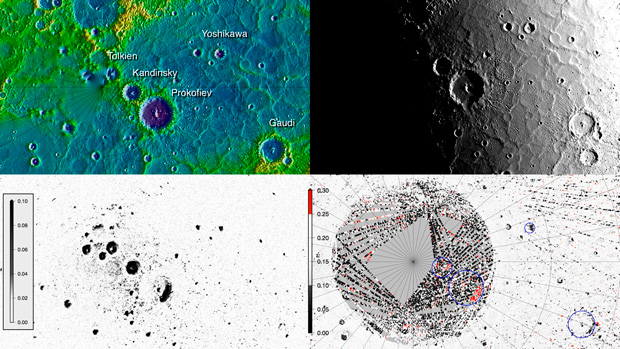NIR sees water and organics on Mercury
Submitted by jonevans on 29 November 2012 - 7:27pm
By monitoring the reflection of NIR light, Nasa’s MESSENGER spacecraft has uncovered evidence that both water and organic material exist on the surface of the planet Mercury.
Launched in 2004 to study the closest planet to the Sun, one of the main objectives of Nasa’s MESSENGER (MErcury, Surface, Space ENvironment, GEochemistry and Ranging) spacecraft is to try to detect water ice on Mercury’s surface. Radar observations from Earth have suggested that water ice may exist in shadowy craters near the poles, where the temperature probably doesn’t rise much above -170°C.
After entering Mercury’s orbit in 2011, MESSENGER began studying the planet with its suite of analytical instruments, including the Mercury Laser Altimeter (MLA) and a neutron spectrometer. The MLA uses a laser to fire NIR light at the planet’s surface and then monitors how it is reflected: bright, reflective regions indicate water ice. The neutron spectrometer, on the other hand, detects hydrogen in ice based on the effect it has on the energy levels of neutrons blasted off the surface of Mercury by cosmic rays.

As a group of mainly US scientists now report in a trio of papers in Science, the MLA did indeed detect bright, reflective regions indicative of surface water ice at Mercury’s north pole, but it also spotted more numerous non-reflective regions that were darker than Mercury’s normal rocky surface. The neutron spectrometer was unable to resolve individual bright and dark regions. Overall, however, its data indicated the existence of a thick hydrogen-rich material covered in a thin less hydrogen-rich layer around Mercury’s north pole.
Putting this data together, the scientists conclude that the bright regions are pure water ice, while the dark regions consist of water ice covered in a 10cm-thick layer of organic material, both of which were originally brought to the planet by comets.